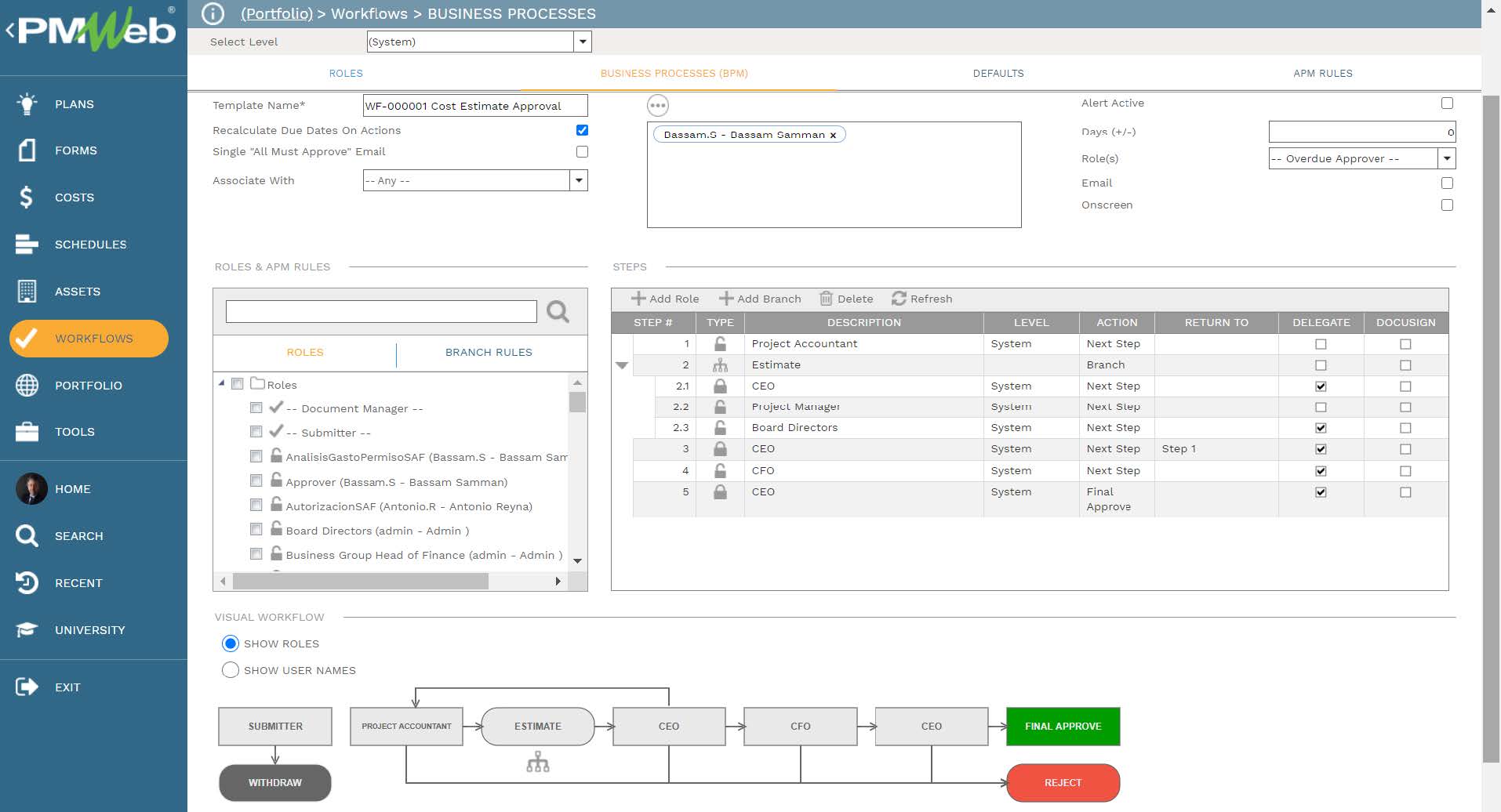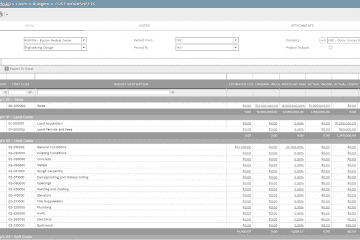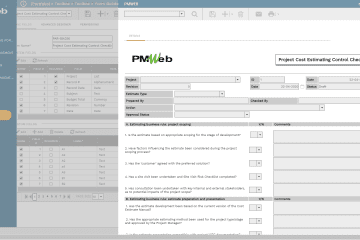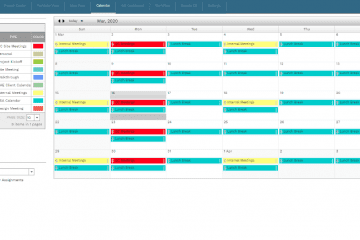Similar to any other business process needed in managing the execution of capital construction projects, documenting value engineering workshops not only will ensure that the process will be performed in accordance with the set best practices but more importantly is that the knowledge gained in performing the process will be captured and becomes available to be shared on other projects. In addition, this captured knowledge will provide the organization with the lessons learned to improve the results of future value engineering workshops. This knowledge could become the data needed by artificial intelligence (AI) and machine learning (ML) platforms for cost optimization of capital construction projects.The Value Engineering (VE) methodology consists of seven sequential phases. Those are information, function analysis, evaluation, creative, develop recommendations, presentation, and finally implementation and follow-up. Each phase has its own purpose, objectives, and tasks. For example, the develop recommendations phase of the value engineering process is to further analyze and develop the short list of ideas and develop those with merit into recommendations.

Using Project Management Information System (PMIS) solutions like PMWeb, the different value engineering business processes, as well as value engineering phases checklists, will be managed as well as associated documents with those processes will be uploaded and stored in PMWeb. This will not only ensure that the value engineering processes are performed as required but also enable monitoring, evaluating, and reporting on the results of each value engineering process. The value engineering recommendations are one of those examples.
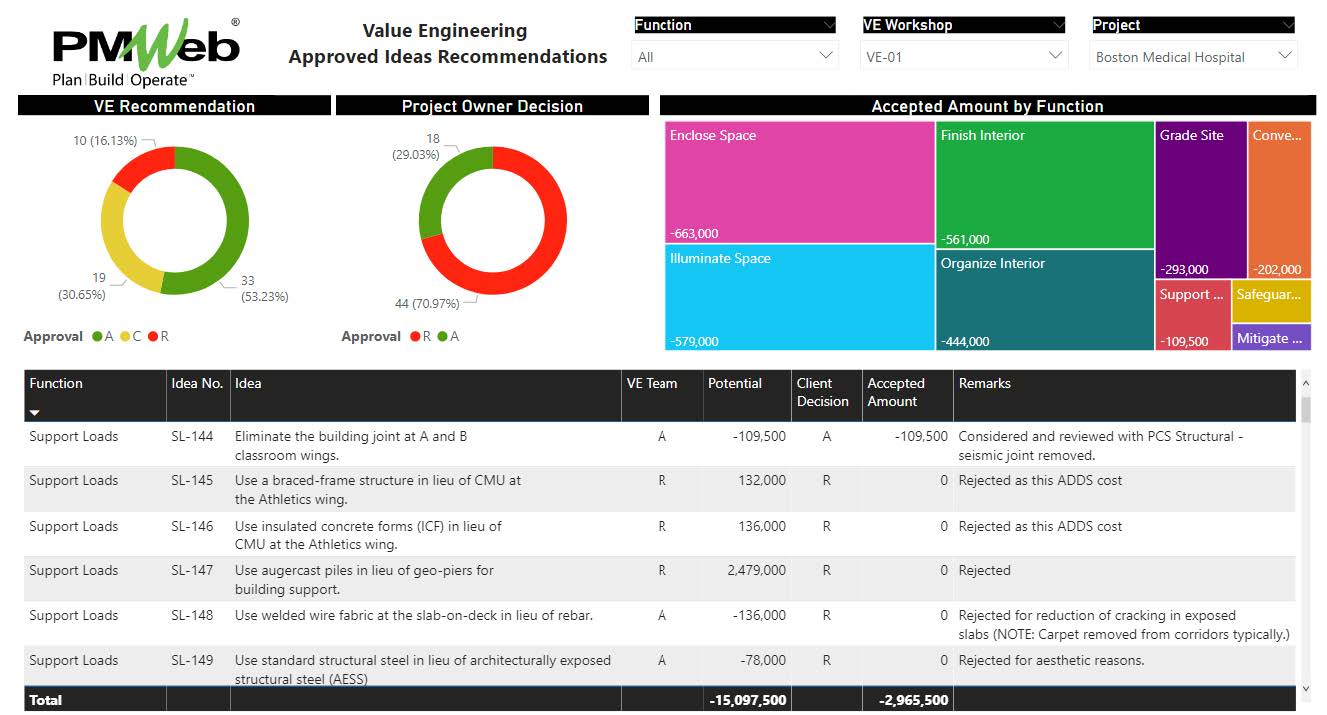
PMWeb custom form builder will be used to expand the already created VE Idea Evaluation form to include the needed fields for the VE proposal. This will ensure that advantages and disadvantages, performance measures attributes scoring as well as the ranking of the VE Idea are displayed. The form header will have the same details as the VE Idea Evaluation form.
The form will include the additional fields for the VE Team member who have approved the VE Idea to be further developed and the date of this approval. It will also include a summary of the life cycle costing (LCC) of the approved VE Idea showing the capital and O&M cost for the original design, proposed design, and savings.
The form will also include the VE proposal selection recommendation by the team and the project owner’s decision. Those decisions could be Approve (A), Consider (C), or Reject (R). A remarks field will be also added to explain the taken decision.
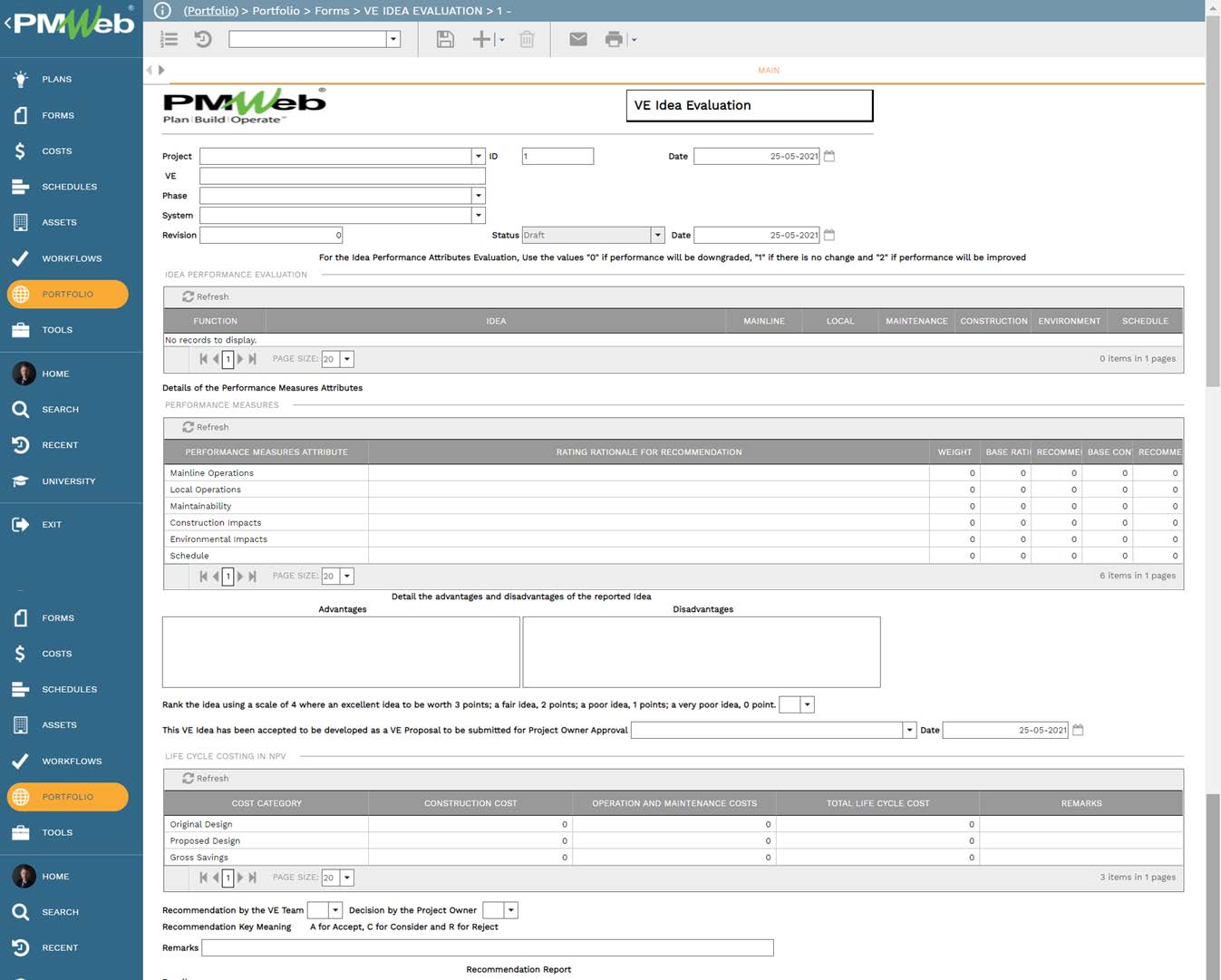
PMWeb notes fields will be used to capture the data required for the “Recommendation Report” for each selected idea which is the key deliverable of the development phase. Those will include the fields for Baseline, Recommendation, Comments/Justifications, and Assumptions/Calculations.
The advantage of using PMWeb notes fields is that those fields are rich text fields. This will allow inserting pictures and other visuals to explain the content. In addition, the user can format the text in those notes fields if needed. Actually, the notes fields can be also used to capture the Advantages and Disadvantages fields and remove them for the form body if desired.
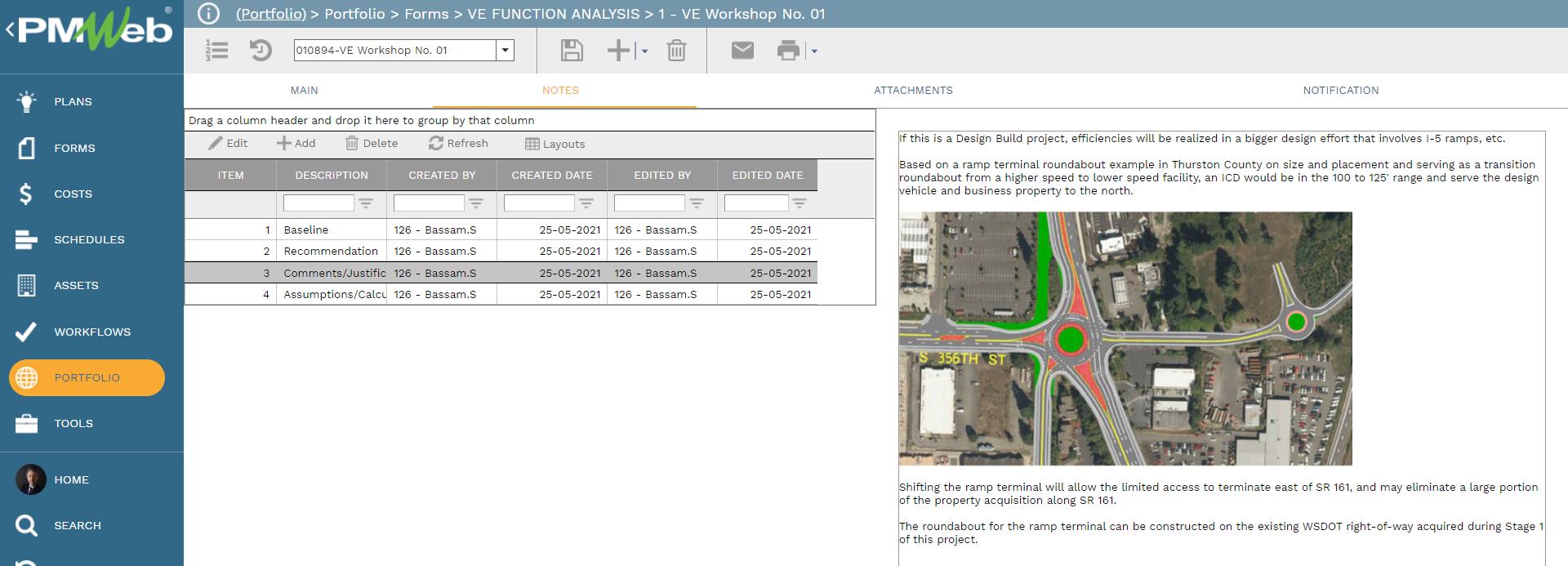
Using PMWeb Business Intelligence (BI) Report Writer, the data captured in the expanded VE Idea Evaluation Form will become the basis for generating the Value Engineering Recommendations in the desired form and format. Nevertheless, what is important to note is that the content of those recommendations is captured in PMWeb at the needed granular level of detail.
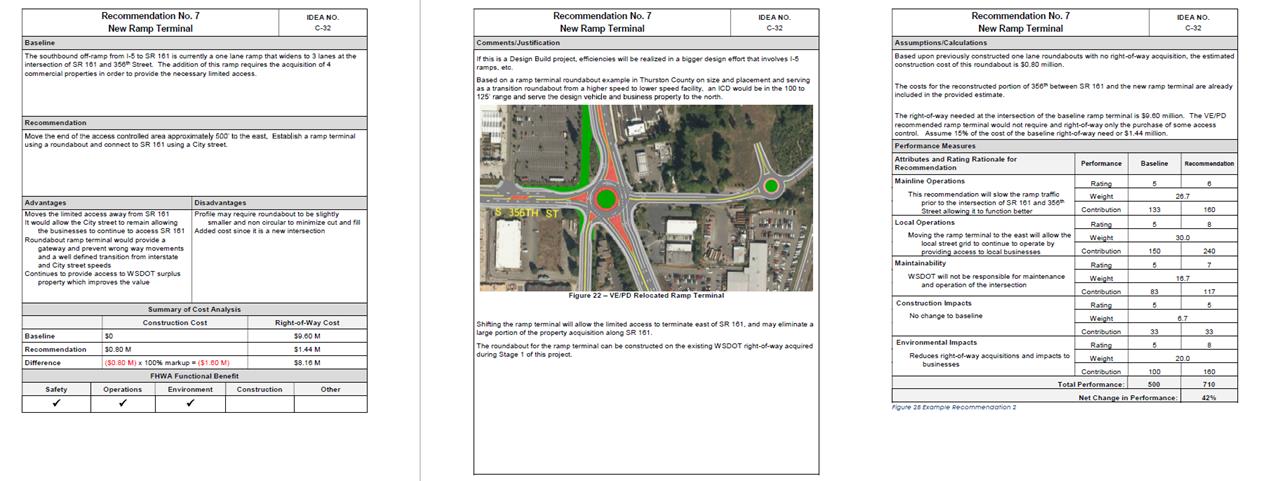
PMWeb will be also used to create a checklist for the Development phase to ensure that all information for this phase had been collected or verified. When using the checklist, the individual completing the checklist needs to provide the status of each item as “Yes” it was done, “No” it was not done, or “NA” for Not Applicable. In addition, remarks can be added if needed.
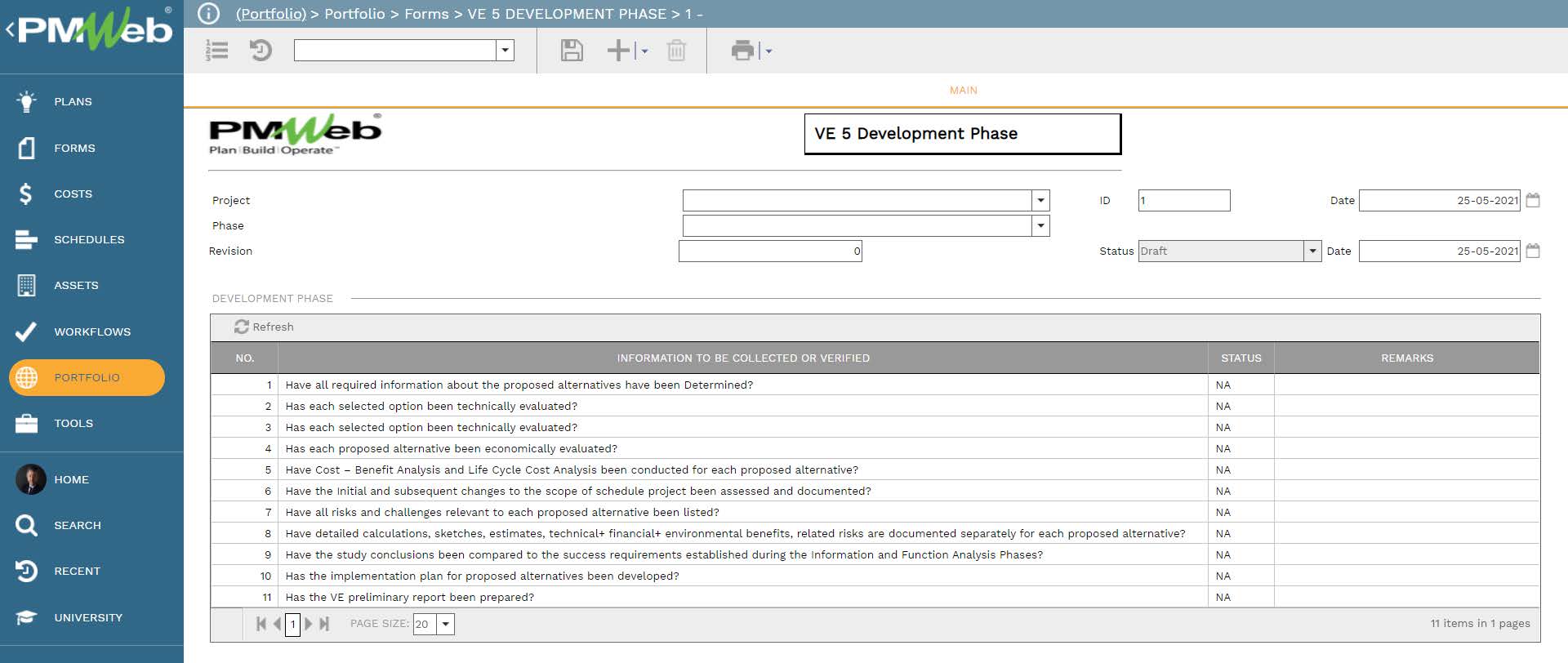
Similar to all types of business processes created using PMWeb, the expanded VE Idea Evaluation form can be also be attached with all supportive documents. Those could include drawings, specifications, equipment catalogs, equipment life cycle costing, pictures among others. In addition, links to PMWeb records for all types of business processes managed in PMWeb can be also added. This could include for example the VE Function Analysis form.

It is highly recommended that all supportive documents, regardless of their type or source, get uploaded and stored on the PMWeb document management repository. PMWeb allows creating folders and subfolders to match the physical filing structure used to store hard copies of those documents. For example, there could be folders for each value engineering workshop with sub-folders for each Building System for which the VE Proposal for the selected VE Ideas was carried out during that value engineering workshop.

For the expanded VE Idea Evaluation form, the individual who has initiated the VE Idea Evaluation can send email invitations to other individuals to access the form. This would require selecting the record hyperlink as an attachment. Of course, accessing the expanded EV Idea Evaluation form itself requires the individual to be a PMWeb user. For those who are not PMWeb users, the individual issuing the invitation can select the option of sending the VE Proposal output form in PDF file format. PMWeb has the option to create pre-defined individuals lists to ensure that all those who need to be involved are invited. In addition, PMWeb allows sending invitations to specific individuals whether those were PMWeb users or not.
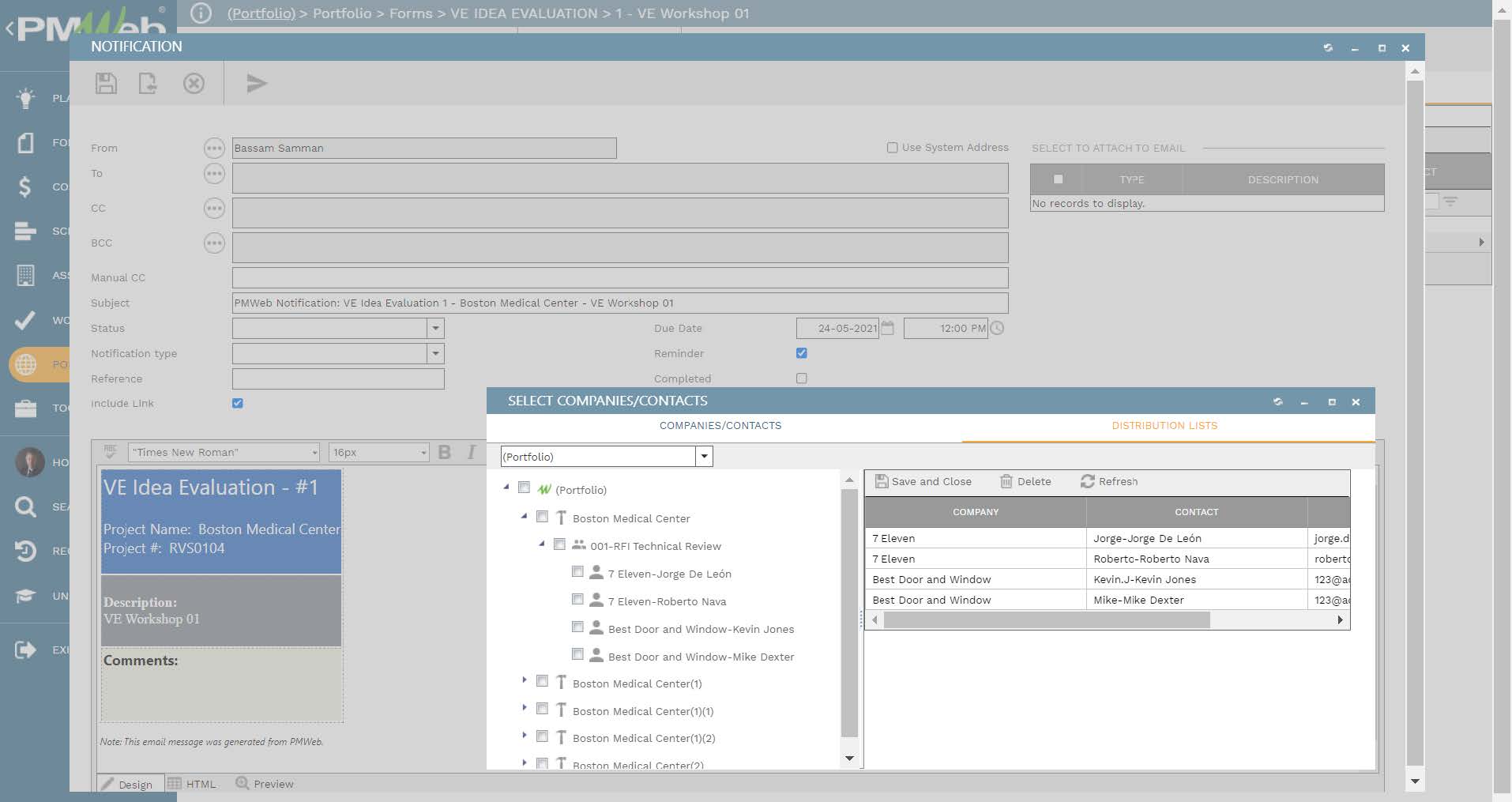
The workflow already created for the VE Idea Evaluation form will be adjusted to reflect the new tasks associated with the VE Proposal review and approve tasks. The workflow will be used to formalize the submission, review, and approval tasks. The assigned workflow will map the submit, review and approve tasks, role or roles assigned to each task, task duration, task type, and actions available for the task. In addition, PMWeb allows setting conditions to the workflow tasks to enforce the approval authority levels set by the organization if this was a requirement.
